CONTOURS PRESENTS
Interview - Brian Palmer
Featuring responses from Brian Palmer. Photographed, filmed & edited by William Watt.
Brian Palmer is someone who lives and breathes golf. As the son of a Superintendent who followed his father’s path into the world of golf, he’s been walking the fairways his whole life. During a recent visit, we spent a typically stunning Kiwi sunrise cutting some fresh hole locations at Tara Iti, the place Brian has been charged with keeping firm and fast (and occasionally a bit fiery) for the last five years. With his recent appointment to Director of Courses across both Tara Iti and Te Arai Links, we caught up about the demands of maintaining three very different golf courses, some of the trends he’s seeing in the industry, and get a little side tracked by the price of pineapples along the way.
Contours: Do you still get out and do this [cut pins] occasionally?
Brian Palmer: We change a couple holes a day here and there, and one of my other guys has slowly become a core setup man – he’s got a good eye. So probably not as much as when I first started, and I definitely do it more in the summer! We’ve got a wide variety of projects going on, it’s kind of wild. I never thought I’d be looking after some of this stuff when I came here. I thought it was just a golf course. It’s so much more. Keeps me on my toes, that’s for sure.
What are some of the trends you are interested in at the moment in the turf industry?
I’m pretty old school and can be a bit of a curmudgeon, but autonomous mowers are certainly getting closer. It’ll be weird because it’ll put some guys out of a job, but that’s a ways down the track yet. We just got another GPS sprayer in – that’s pretty damn cool seeing just how quickly we can spray the surfaces and not have to drop any foam as they’re so accurate.
Is that a ground sprayer or a drone?
Ground. But there are drone sprayers. I know of some larger resorts in the states that’ll do steep bunker banks and stuff like that with the drone, and again, the accuracy and the precision is just amazing. Currently, there’s a chance for human error in a lot of these applications, so that’s exciting for me looking forward to seeing how technology can improve our processes and accuracy.
But overall, as an industry, we really haven’t evolved that much. There’s a lawnmower museum in Southport, England where they’ve got some of the very first greens mowers, they must be about 120 years old. And it’s really not any different than what we have today. Yes we’ve got some bells and whistles these days, but it’s got a reel, it’s got a bed knife, it’s a gravity-fed gas tank with a fan on the engine to cool it off. Old school stuff certainly works in greenkeeping, but it’s about time that we start progressing and trying to keep up with everything else. In agriculture, GPS autonomous vehicles have been around forever. But here, we’ve just never had it. I think it’s because we’re such a small sector. Even though we think we’re big, because this is what we live and breathe, in reality golf and golf technology is just such a small part of the industry.
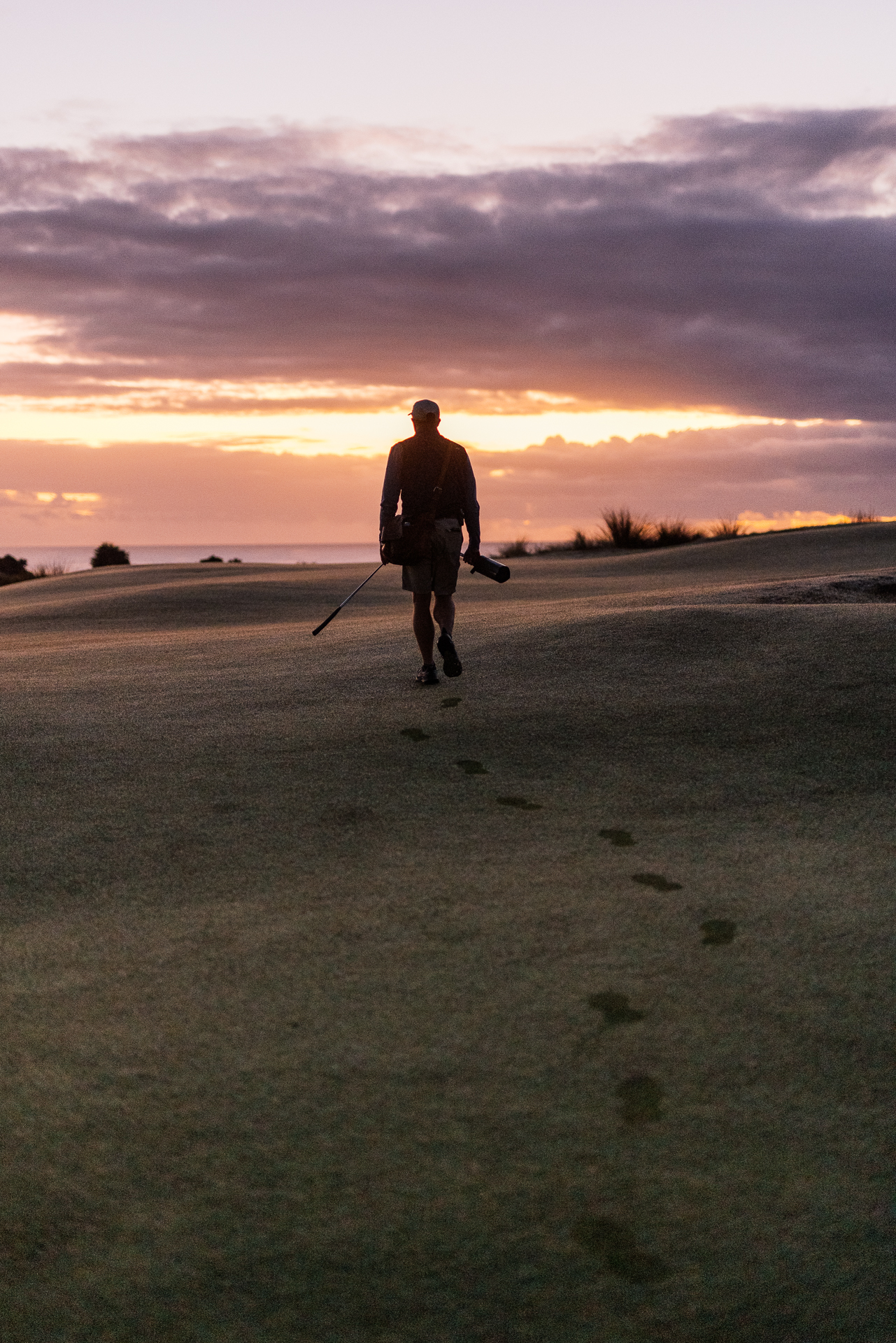

C: I noticed back in the office you had some large screens with pretty detailed maps and blinking lights and so on…
BP: Yeah, the irrigation systems have come a long way. We have just upgraded to some new software so that we can actually see if a sprinkler head is going to fail. It’s smart enough to say, “Hey, there’s a drop or a spike in power. Keep an eye on that sprinkler head.” Whereas before, you didn’t know it was bad until it was dead, and that’s too late. Thinking more about water usage – I can actually water the course off my phone and adjust programmes on the fly. I could be out walking like we are today and say, “You know what? I don’t like this hump. This is too dry, or too wet,” and adjust the program so that when it runs this evening, it’ll be fixed by morning. So precision watering has changed quite a bit which is important because golf courses are under the microscope. I mean, we’re not producing any food or anything. It’s just a game, you know? And we’re using up a lot of the world’s precious resources to grow grass for a game. There’s a lot of people that don’t think we should be using it at all. In Melbourne, you guys are doing anything you can to catch and collect water for your golf courses on The Sandbelt. And here, it’s no different. We collect our groundwater from our pumps – soon we’re going to be updating our pumps to be able to reverse the flow and ship water up to our main reservoir. It’s pretty wild.
C: So there’s not much in the way of electrification of general equipment?
BP: There is a little bit – they’ve got two electric vehicles at [Te Arai] Links. Electric carts have been around forever, but as you know, how clean are those batteries? What are we doing to the environment to mine resources for the batteries, and how do we dispose of them? There certainly is that debate.
Some of the chemistries we use have changed as well. Not that long ago, you would be spraying lead and mercury and all sorts of different stuff on courses. If it’s to keep Poa out or if it’s to spray for diseases, your main fungicide for a long time was just straight mercury. We’re so environmentally conscious now with what we spray and how we spray, and the thresholds that we can use.
We look after these places in such a different manner than any of my predecessors. I remember getting to Shoreacres and going through the shed and there was a pile in the corner with a tarp over it, with these huge wheelbarrows holding the tarp down. I ask the long-time assistant, “Yo, Ralph. What’s underneath those tarps?” And he’s like, “Oh, jefe, that is some bad shit.” I was like, “Well, what is it, Ralph?” “I don’t know,” he says. I take off the tarp and it says, “Lead Arsenate.” We’re not spraying anything like that these days. Everything now is very targeted in the way our irrigation systems are designed. We can go watering products to the right depth pretty easily nowadays. Luckily working with fescue in a humid climate like at we have here, we don’t spray a whole lot of fungicides. Maybe an application or two a year.
C: Moving over from the USA to a remote part of New Zealand was obviously a big move for you personally. What has that experience been like?
BP: It’s funny, people I meet out on the course or around town are often like, “Oh, what’d you come over here for?” as if I was just passing through and happened to take up this role at one of the best golf courses in the world. And I say, “Well, I’m here for the job.” For people that aren’t in the golf world, they often don’t realise this is a profession, and a super competitive one too. They also often don’t appreciate the scale of the job and what goes into it. I mean I manage a pretty big team, and a fair amount of money. I also need to be across the fine details of chemistries, irrigation, then tackle the challenges of staffing in a remote location and ensuring the training is all up to standard.
c: Can you run us through your daily routine?
BP: I like to wake up pretty early, I’ve always been an early riser. I’m up at 4am and try to do some sort of workout at home, then be in here in my office at five. I really like a bit of time in the morning to get everything set. Most of the crew start at 6am, but I like myself, assistants and mechanic to come in and help make sure mowers are all parked outside, set up, ready to rock and roll so that when that morning meeting is done, it’s like “OK guys, hop on your mower and go!”
That routine allows me to get a game plan together, get some emails done and then hopefully, be able to cut cups like today, or even just go for a walk out on the course. Sometimes it’s just nice to just walk this place and traipse over some dunes. It might not appear as if I’m doing a whole hell of a lot, but I’m always learning more about the property and what we have to do and need to stay on top of.
In the summer, we’re always watching moisture. So if it’s a hot summer’s day, there’s definitely some extra watering involved. I love hand watering, so I’ll be out on a hose in the mornings and do a preliminary irrigation set-up after walking the course and seeing the course set up.
Getting it all dialled in makes the end of the day easier when I can be like, “Actually, you know what, everything we set up is looking good.” Before leaving someone will make a quick loop on the course to make sure everything is right.
The end of my work day varies between 3 – 6pm, depending on what has been happening that day. Then I go home, and try to get down to the beach for a swim. I love to cook, so then I’ll go and make a nice dinner, have a good cocktail or beer, and that’s about it. Pretty simple.
”It’s funny, people I meet out on the course or around town are often like, "Oh, what'd you come over here for?" as if I was just passing through and happened to take up this role at one of the best golf courses in the world.
Brian PalmerSuperintendent




C: You mentioned last time we caught up that you were growing fruit?
BP: Yeah, we’ve got a bit of this and that. The bananas have taken off crazy so we’ve got quite a few bunches of bananas that are in the process of ripening right now. The mandarins are going crazy, so we’ve got a tree covered in them. And we’ve got oranges and peaches not far behind. Not only do I like grass, but I like all plants, it’s fun. It’s just a wild climate here as well – subtropical really. So there really isn’t a frost so I can grow pretty much whatever I want. There’s a guy with a pineapple plantation up in the Whangarei Heads up there. You can see it from here. He’s got like 20,000 plants.
C: Did you know pineapples used to cost like $20,000 each?
BP: Really?
C: Yeah way back in the 1700s they were super rare in Europe as they were almost impossible to grow. They became a symbol of wealth and power, a luxury item of its day, and people would just carry them around under their arm. You could even rent a pineapple just to show off to your friends at a dinner party. Then as steamships came to prominence, they became more attainable, and eventually lost their luxurious luster completely.
BP: I was just in Hawaii for the first time and had some of the best fresh pineapples I’ve ever eaten. They’re just everywhere over there, and they’re so good.
C: Yeah, it’s an underrated fruit these days.
BP: Totally is.
Video piece – Cutting Pins at Tara Iti
C: What are you watching at the moment?
BP: I don’t have a TV.
C: Was not having a TV, a conscious choice to not get sucked into the news cycle?
BP: I don’t know, I just don’t watch much and my wife doesn’t really at all. She’s just a voracious reader. She rifles through books at pace. She’s the only person I’ve ever seen brushing her teeth and reading a book, or just walking around the house with it. But yeah, we live in a great outdoor area, it’s all about the outdoors and I don’t know, there just aren’t many times where I’m like, “Hey, I want to go watch TV.” Every now and again we will, I’ll watch a couple shows on Netflix or YouTube on the laptop about cooking or something like that. But that’s about it.
C: What about music?
BP: I’m a big music lover. I’m all over the place too. I love bluegrass, some old school country, love a fair amount of hip hop, and a bunch of indie rock. I was just listening to the Shins the other day, and there’s a bluegrass band I really love called Trampled by Turtles. I listen to them quite a bit. I like some of the rock down here, what do they call it? Psych, surf rock – like the Daily J. There’s a another local band here called Sojourn that’s quite good. They’re from Mangawhai actually – James, one of our caddies, is their guitarist. Also there’s a new album from the lead singer of The Roots, Black Thought, and Danger Mouse – it is pretty killer.
I like albums too – no playlists. I go all the way through an album and that’s how I know if it’s a good artist or not. It’s one thing to like a song, but I want to be able to listen to the album.
C: I was chatting with Mike Cocking about music and he was saying that designing a golf course is a lot like making an album.
BP: Yeah. It’s got to have a certain rhythm to it.
C: Over eighteen holes, you don’t want it to all be at full volume. If Tara Iti is an album, what’s the best part of the album for you?
BP: Yeah, this is something we talk about a lot. 15 to 18 are really good. I mean if there’s a single pinnacle, a couple phenomenal golf holes, it’s probably 8 and 9, and they’re almost sleepers in a way because they’re not oceanfront or ocean views. And people don’t really speak about them or photograph them. But for me it’s, 8 and 9, – I could hit rewind button and play them over and over. Whenever I play a little loop out here, four to six holes or whatever, it usually includes 8, 9 and 4, at least one of that bunch.
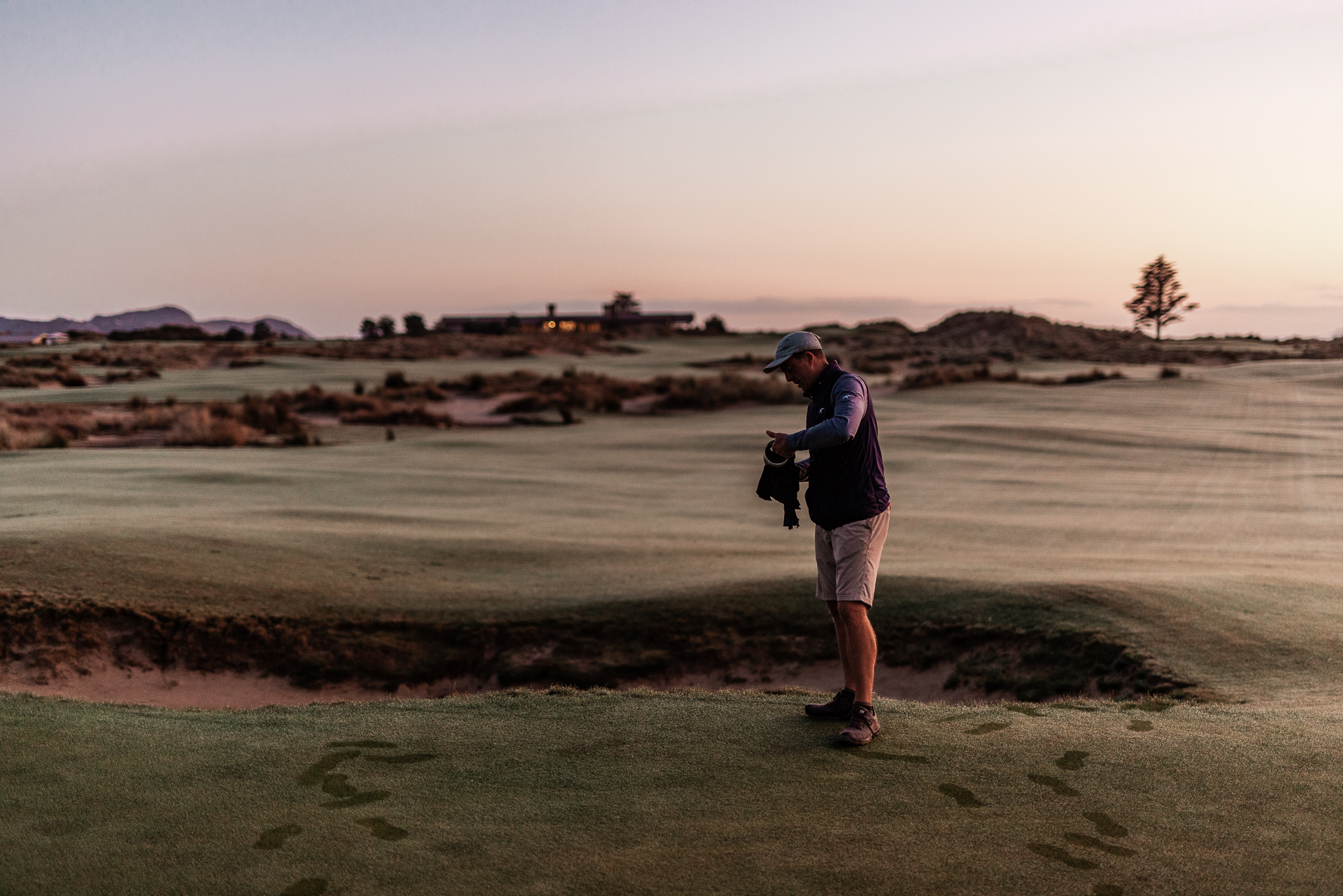
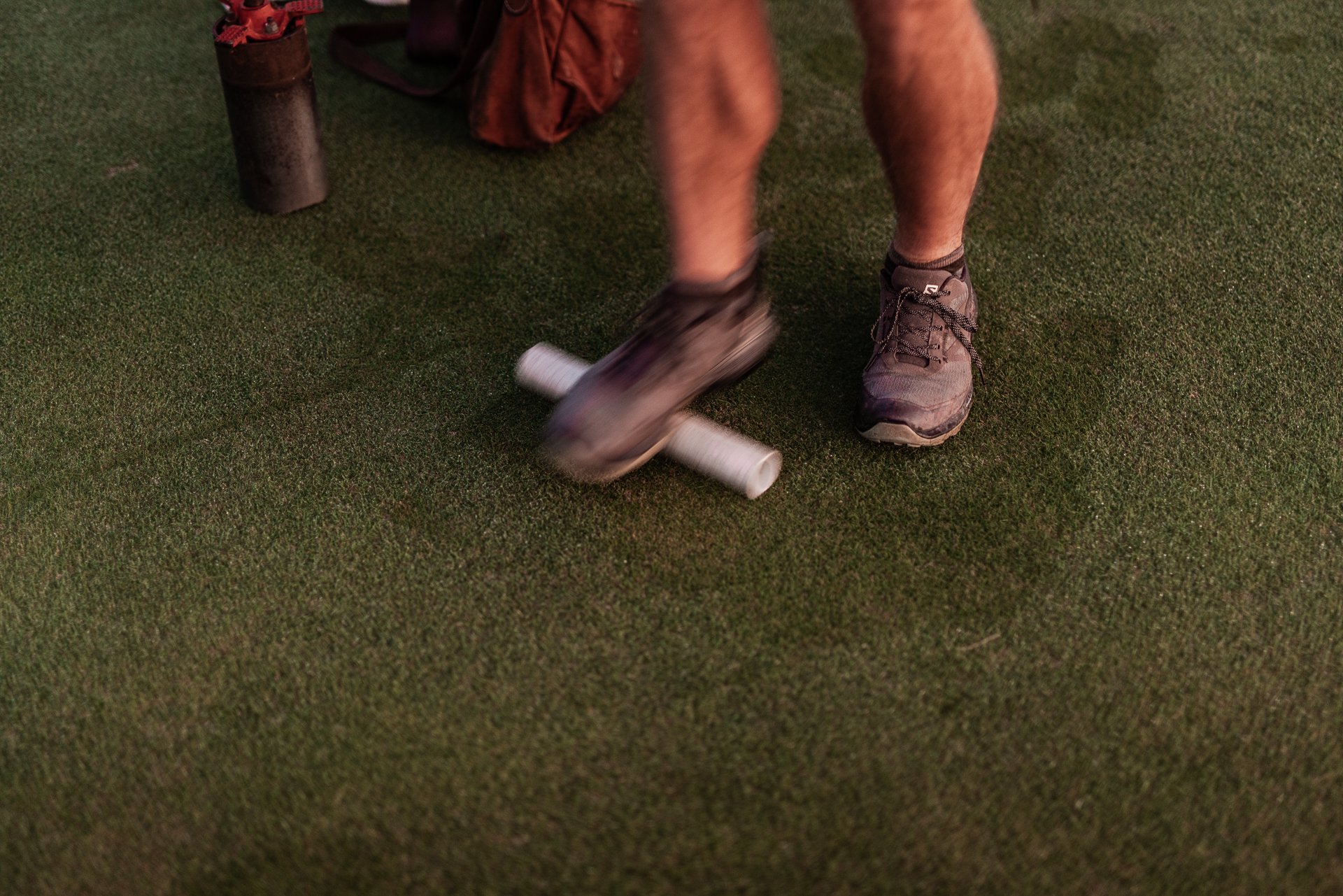

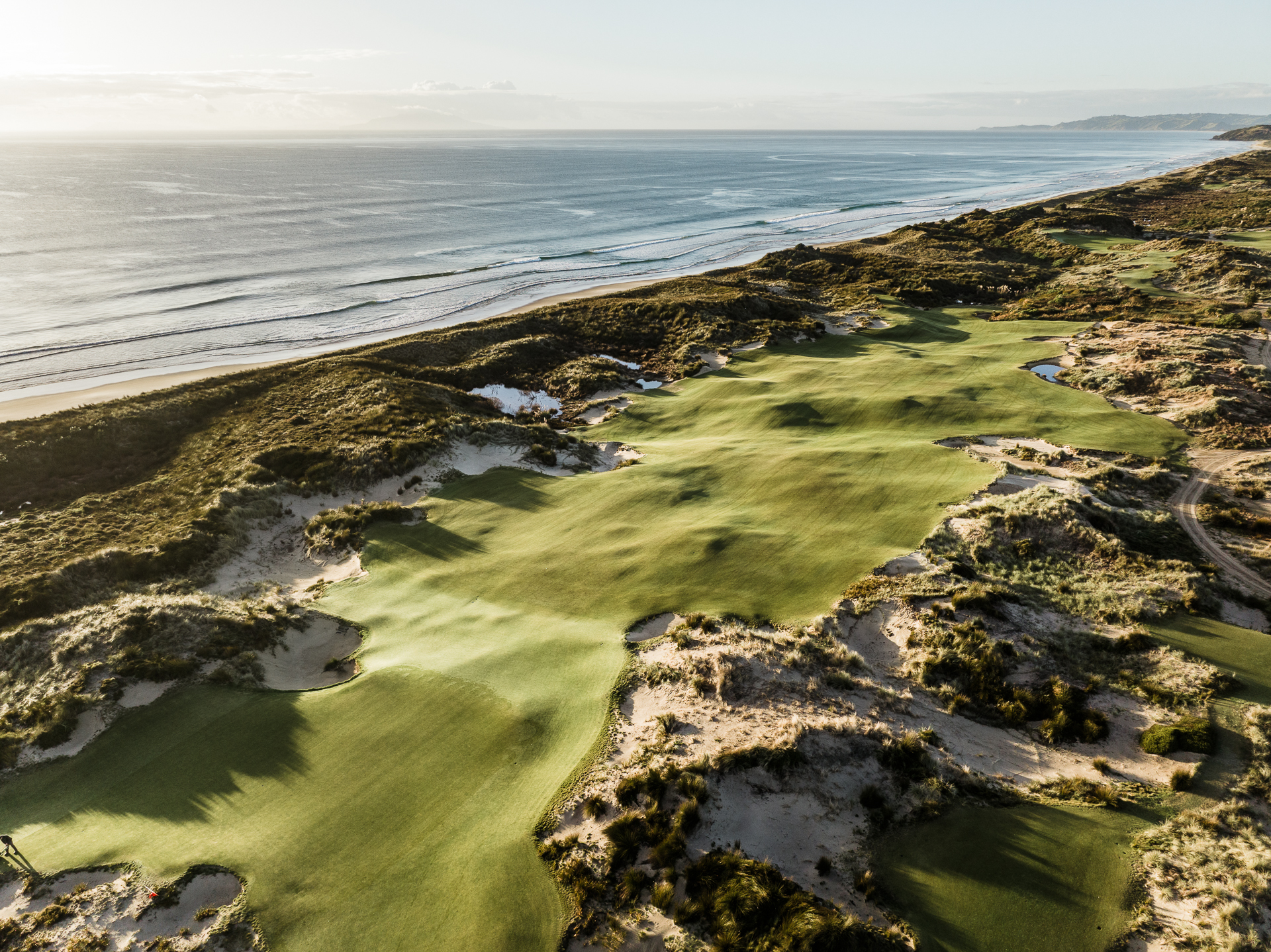

Te Arai Links South (and soon to open Te Arai Links North) are now also under Brian’s stewardship
With 36 holes at Te Arai Link recently coming under your direction, what are some of the new challenges and opportunities that this larger role presents for you?
I like a challenge and this certainly presents me with one! It is a great opportunity for the superintendents of all three courses to grow. In the future, it will be a great opportunity to promote from within and try to develop a homegrown team of greenkeepers.
With each course at a different stage in it’s development cycle, how useful is it to have seen Tara Iti evolve, and know to some extent what’s coming at you this time around?
The courses are so different in their architectural styles and their locations that the environment has a different effect on all the three. Tara Iti has evolved quickly because it very exposed and the bunker style has steep faces that allows sand to move around. There are vast sand expanses in between holes that is meant to be kept fairly clean of vegetation, so that sand can really move around. Te Arai Links South does not have as much exposed sand as Tara Iti and so it will not move around as much, other than a few holes. Te Arai Links North is very young, and very different from the others. The bunkers have grass faces so that will help keep sand in them. Several holes are in the woods, which will keep the wind from blowing through as much as the other two courses. As for working with fescue surfaces, we have learned that as it matures it really starts to take care of itself. I have learned a lot about the species and plan to implement a lot what we do at Tara Iti at Te Arai Links.

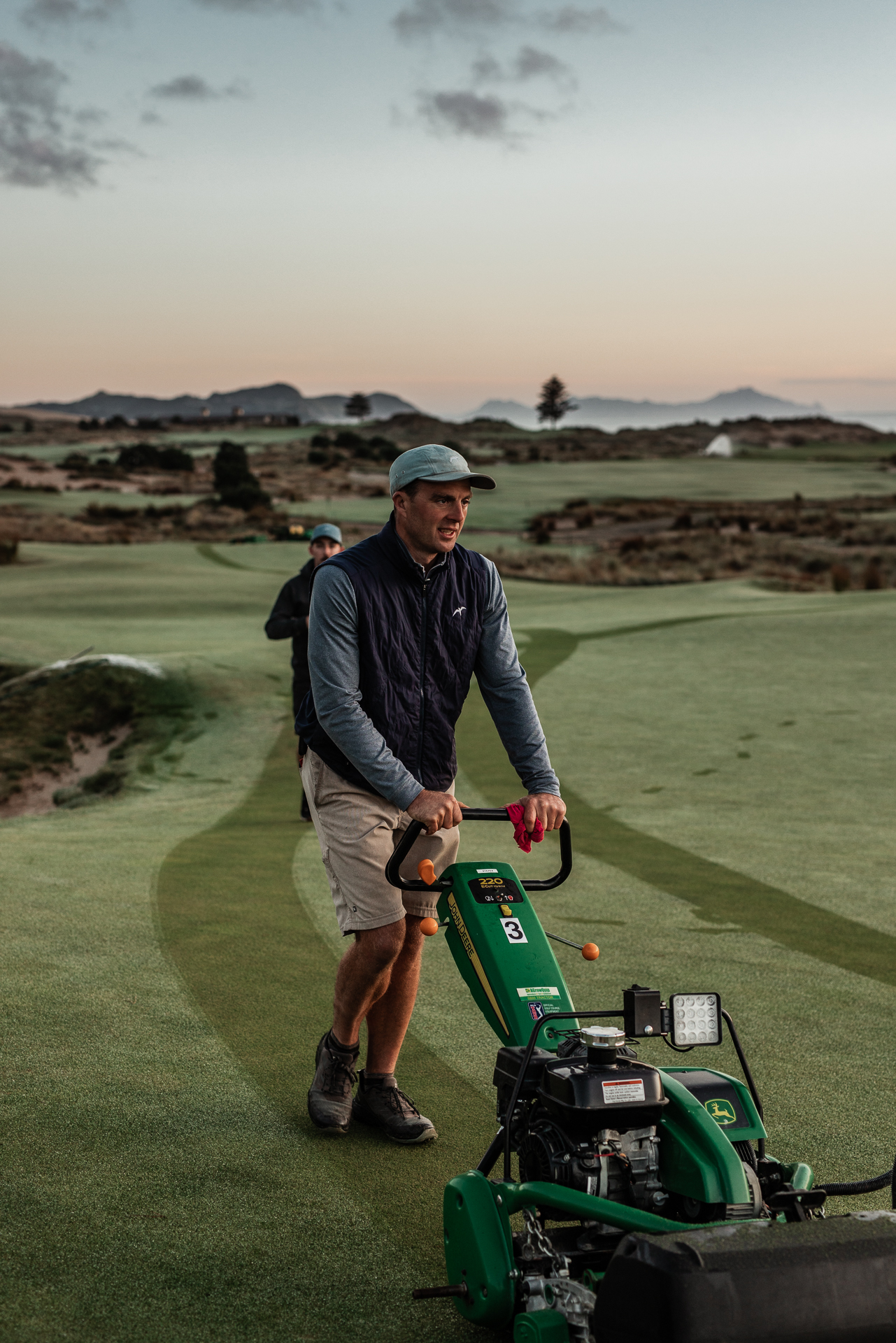





Thanks for the story. I have been to Tara Iti, an incredible place for sure! Brian is my son, couldn’t be prouder of him and his journey.
Thanks again.
Great article, very informative! Hope to visit NZ one day!